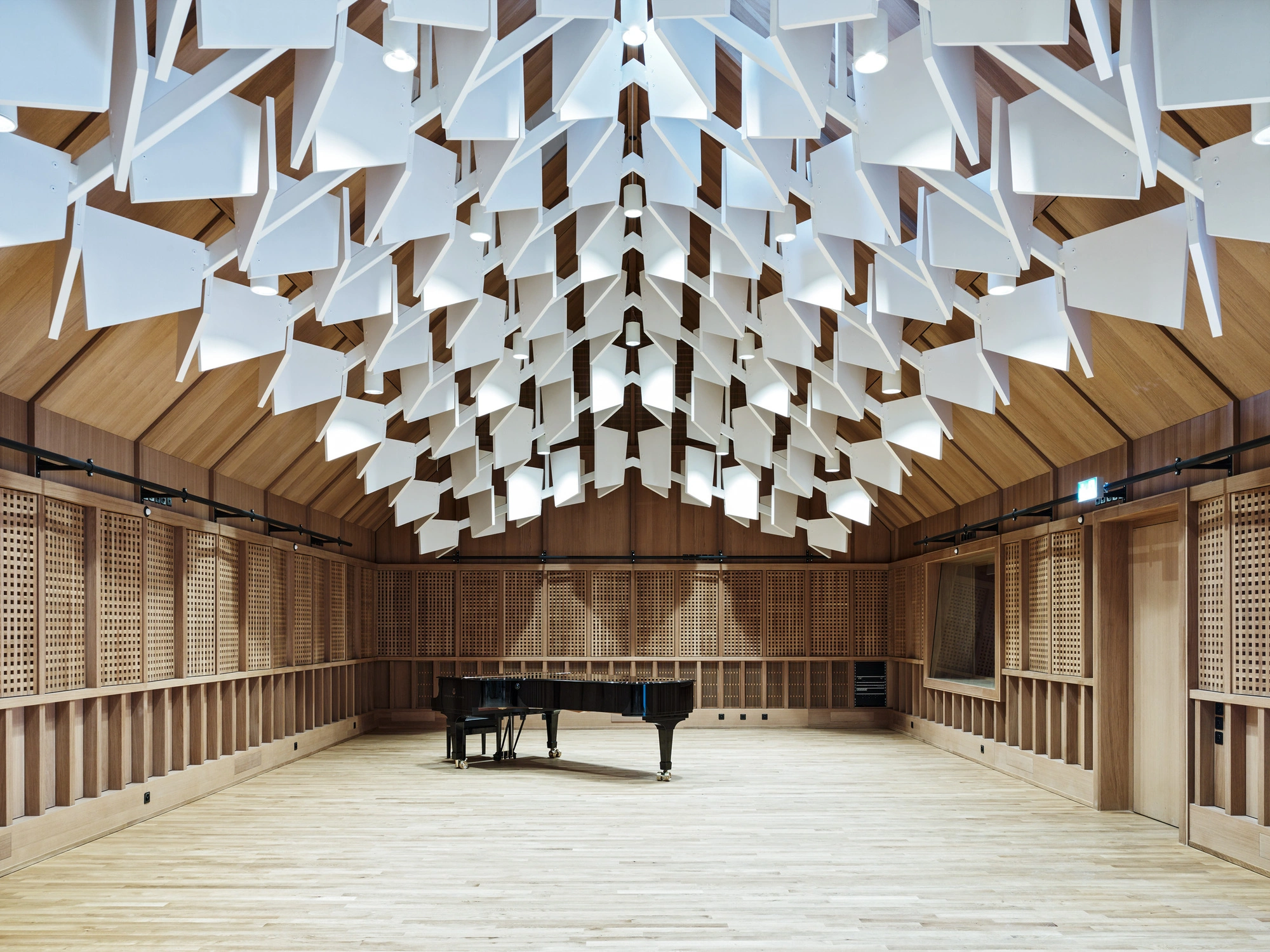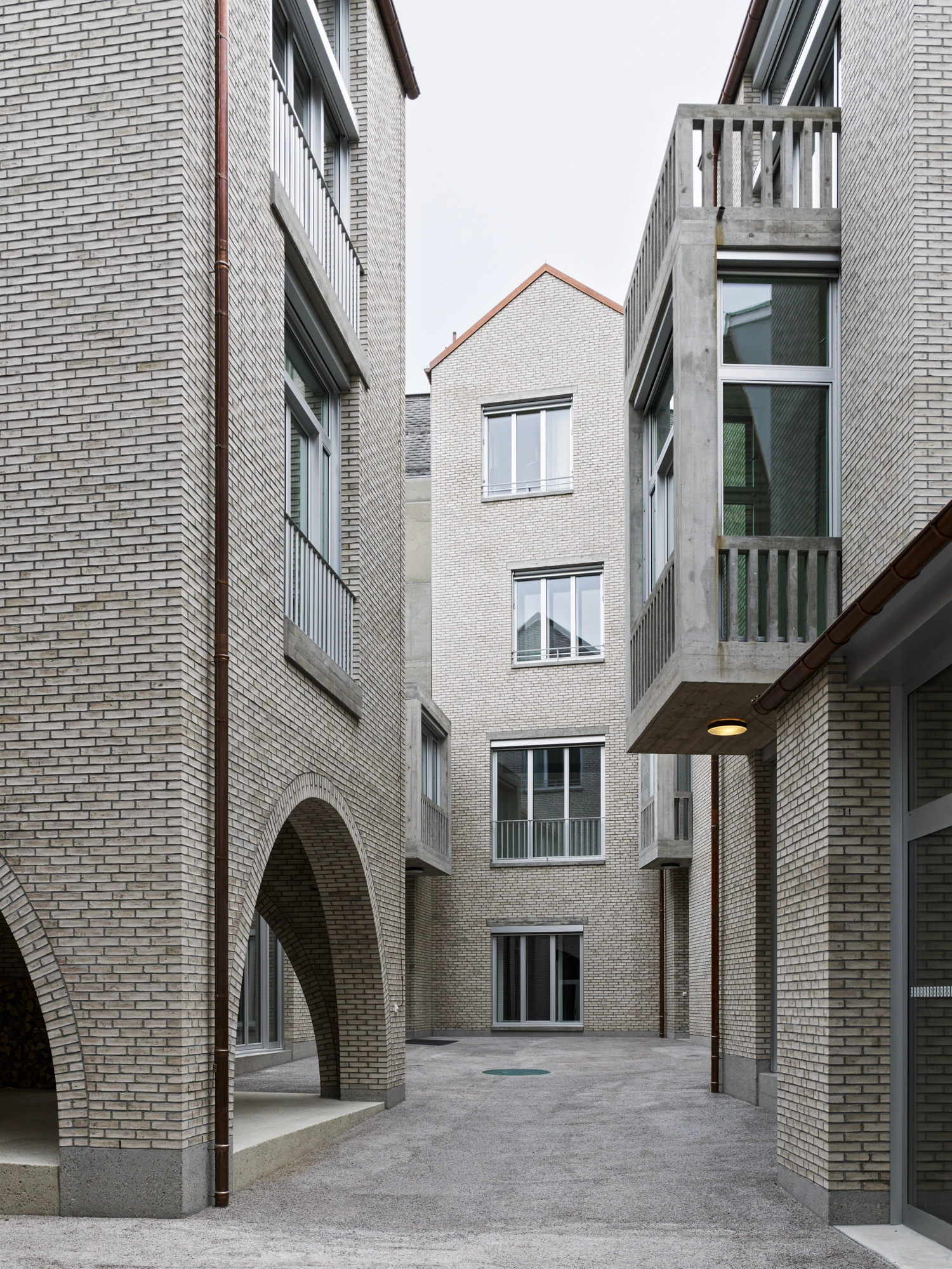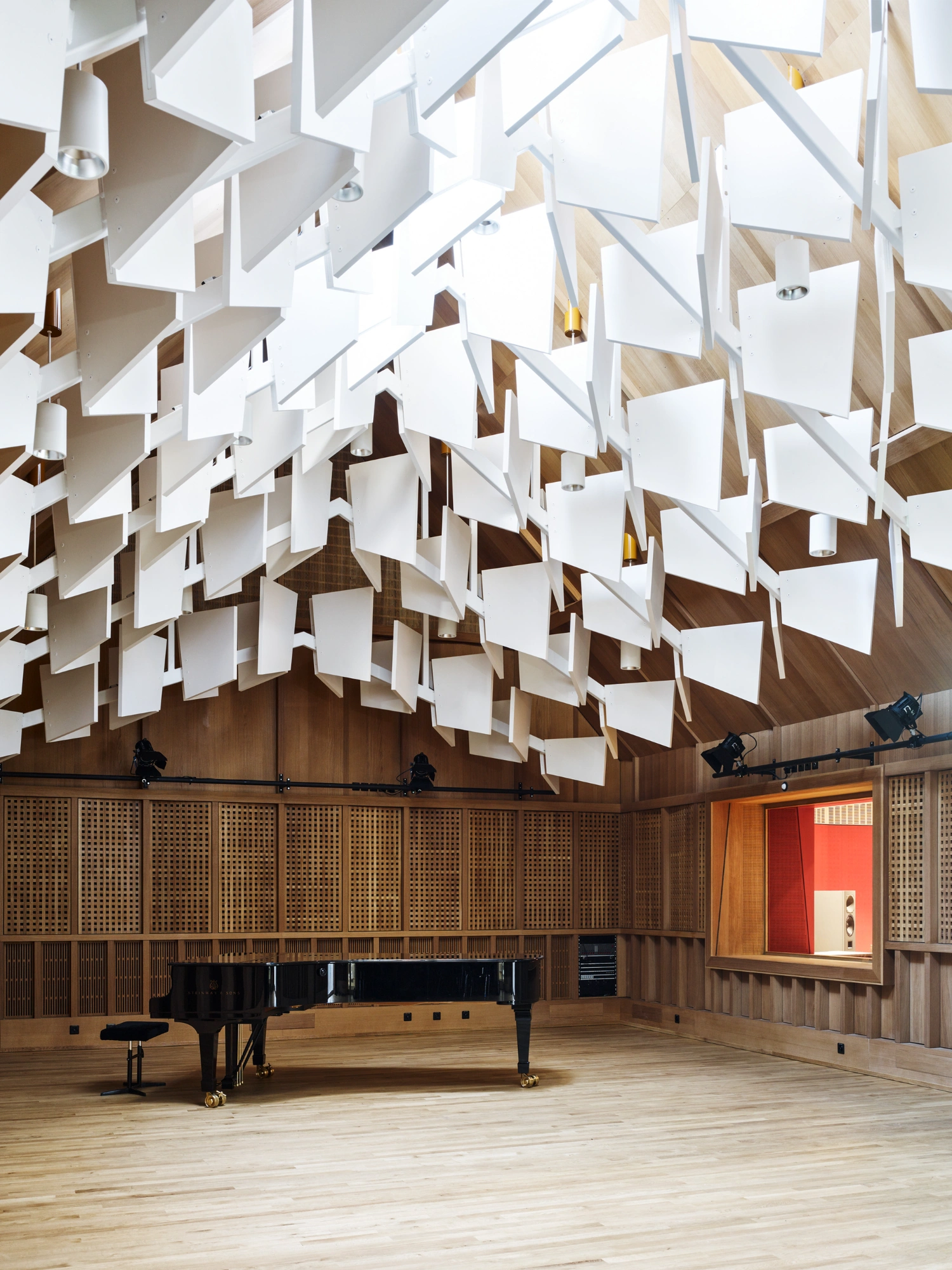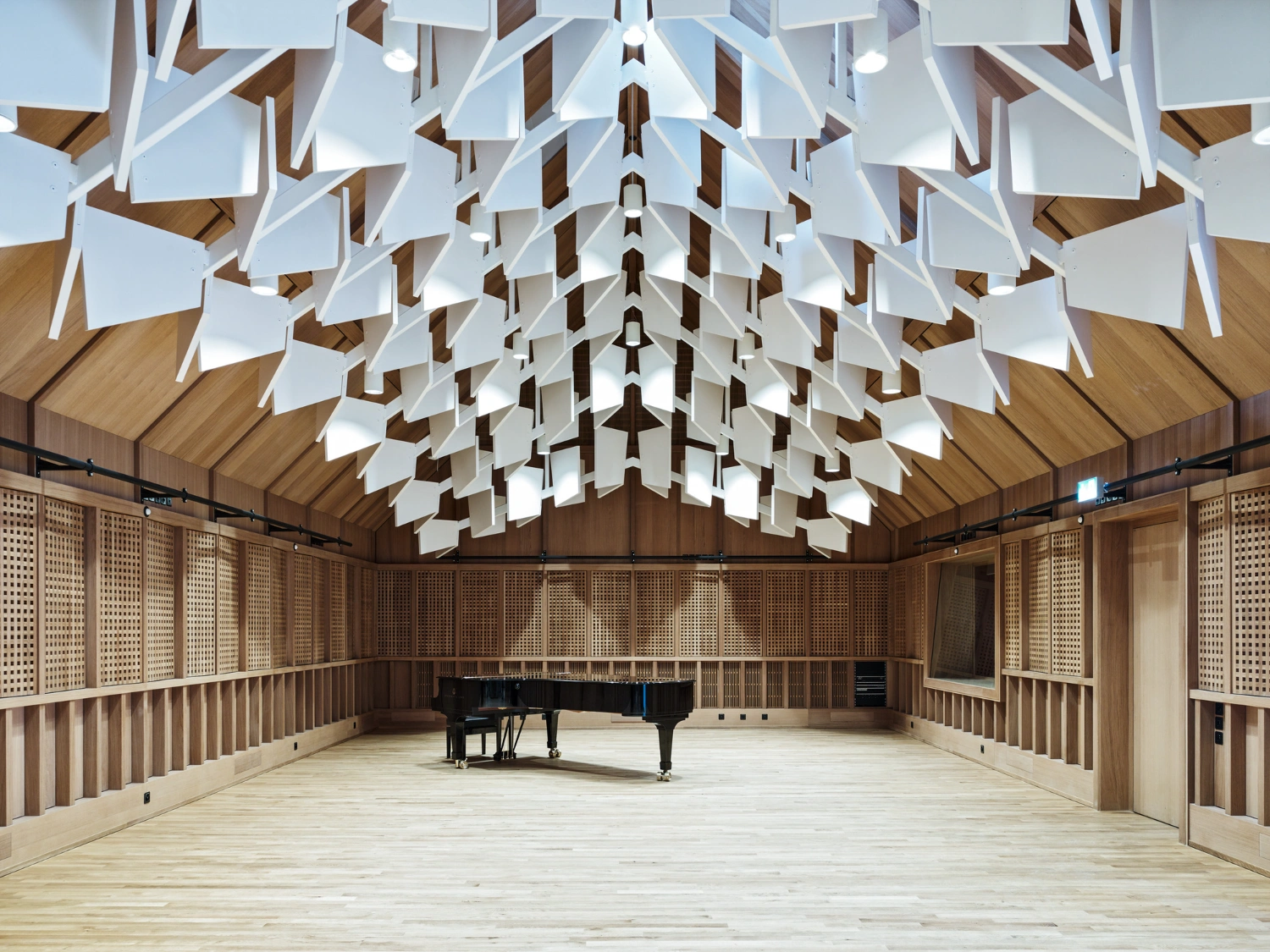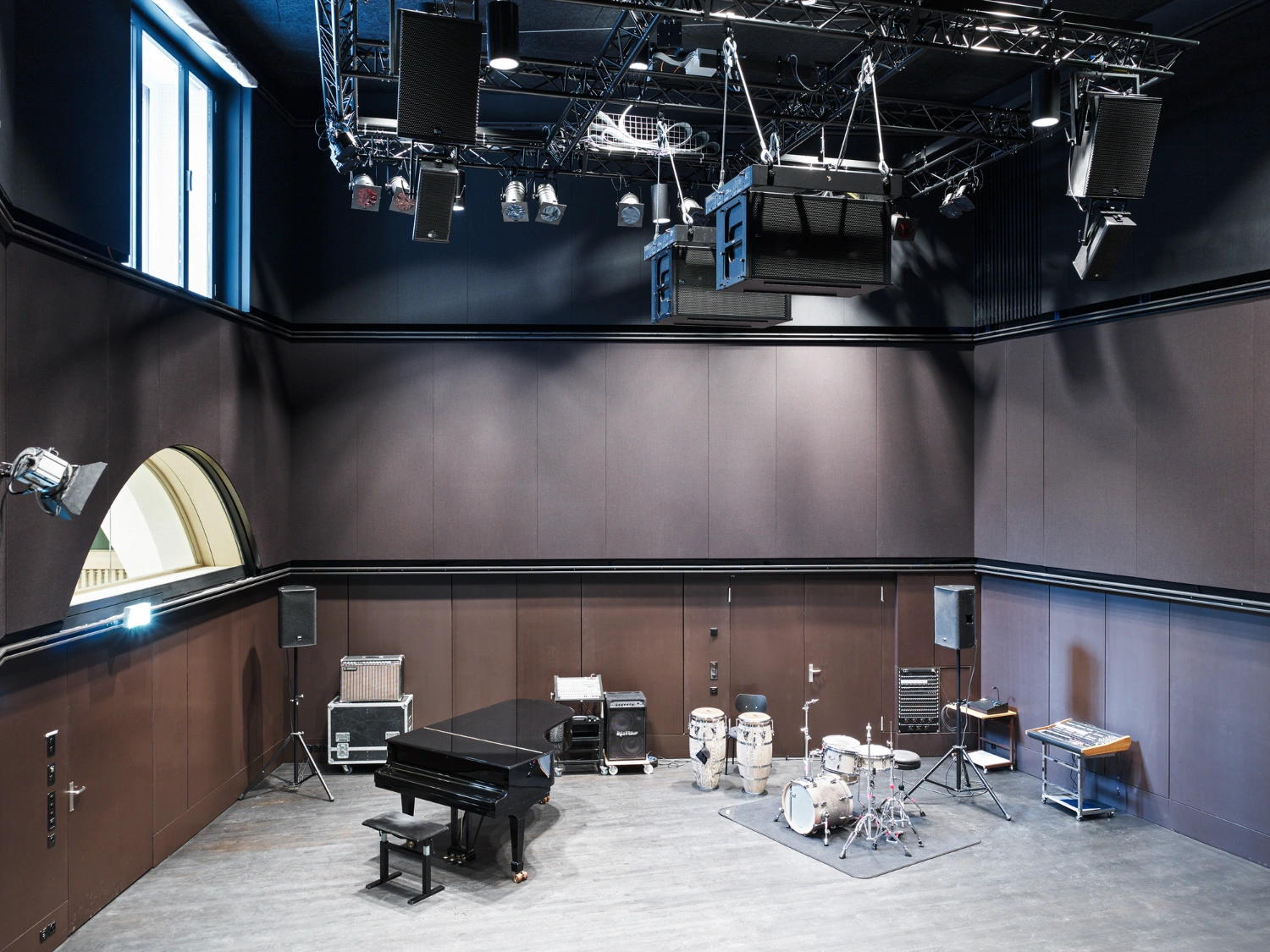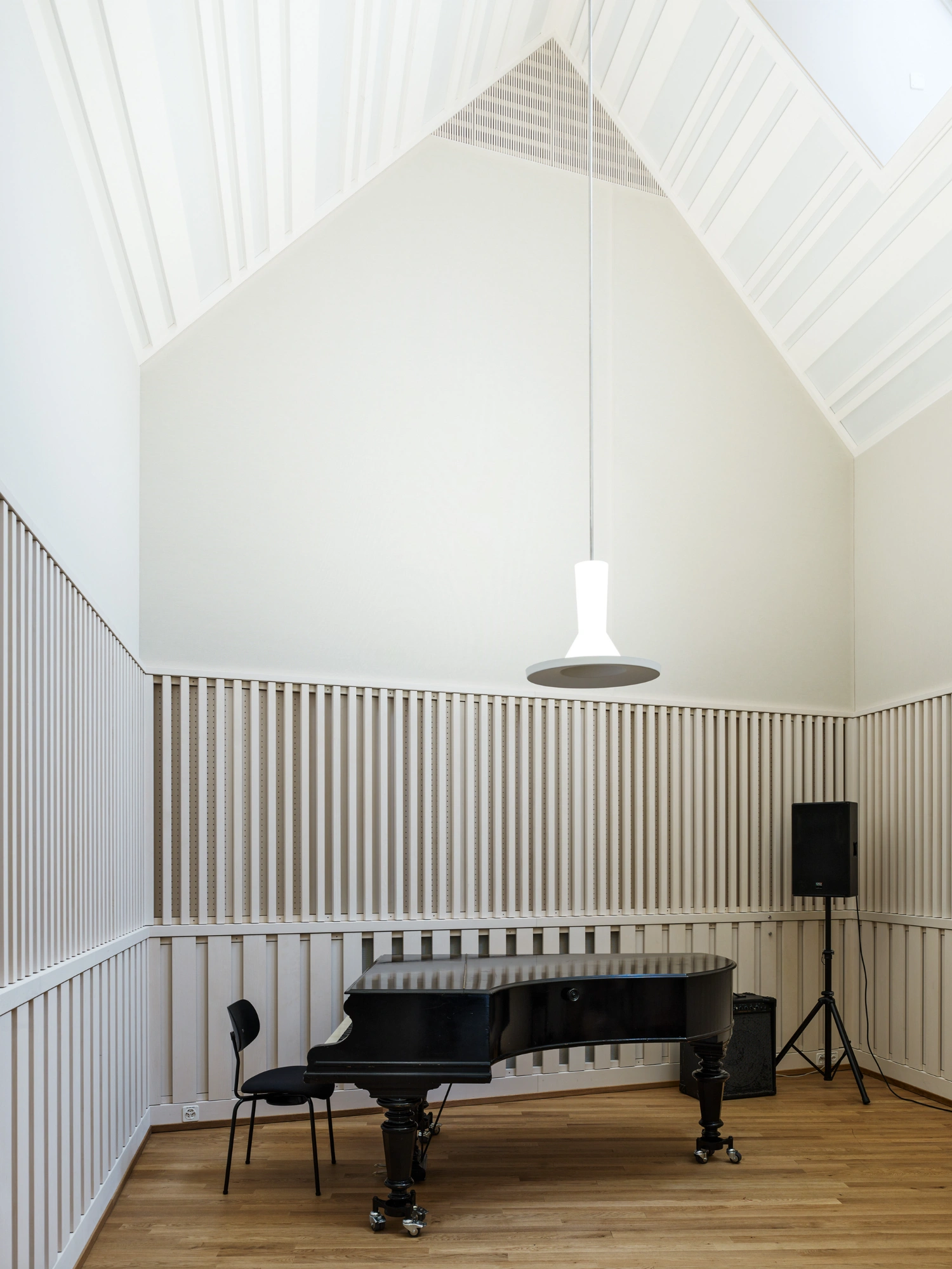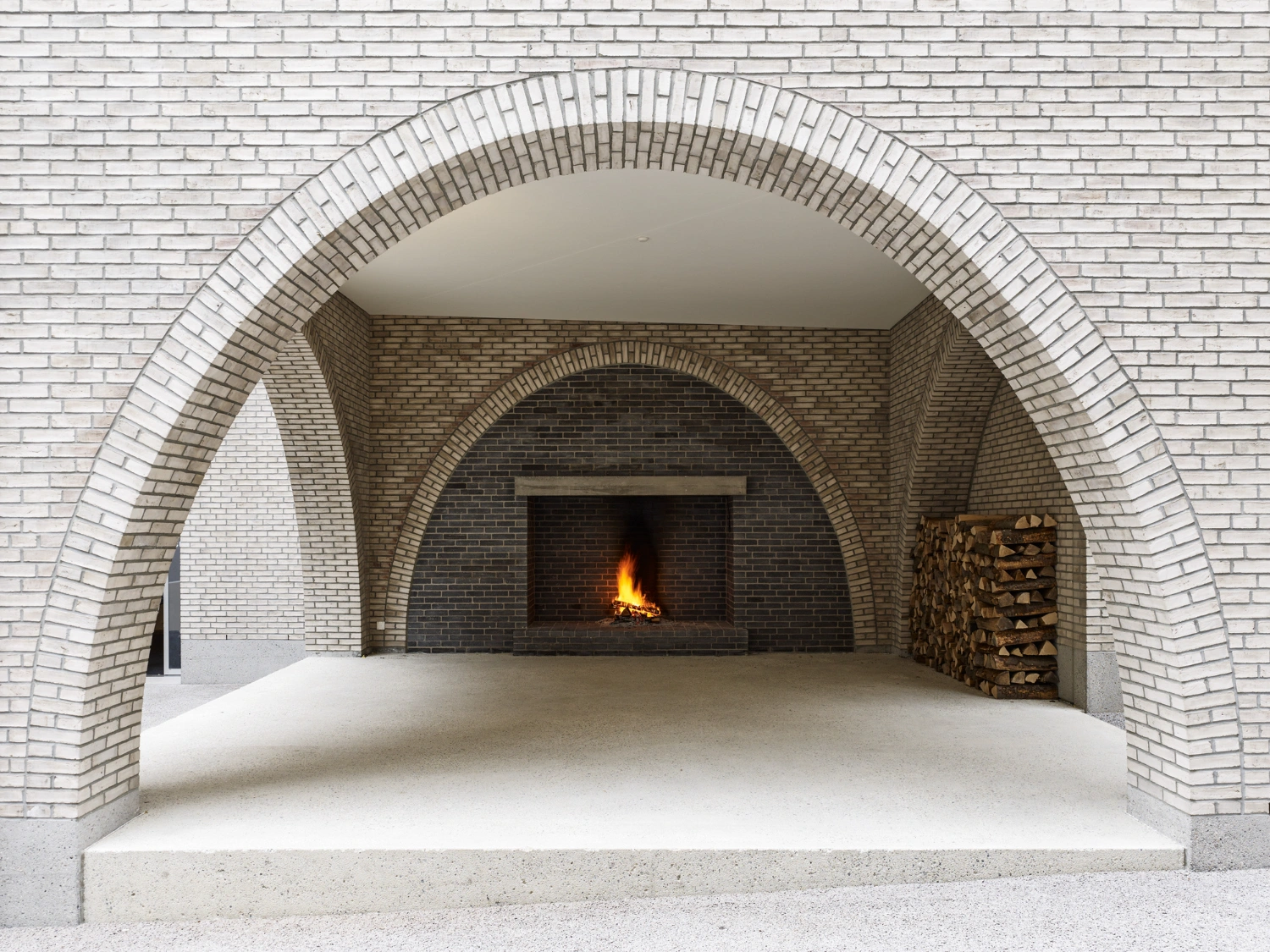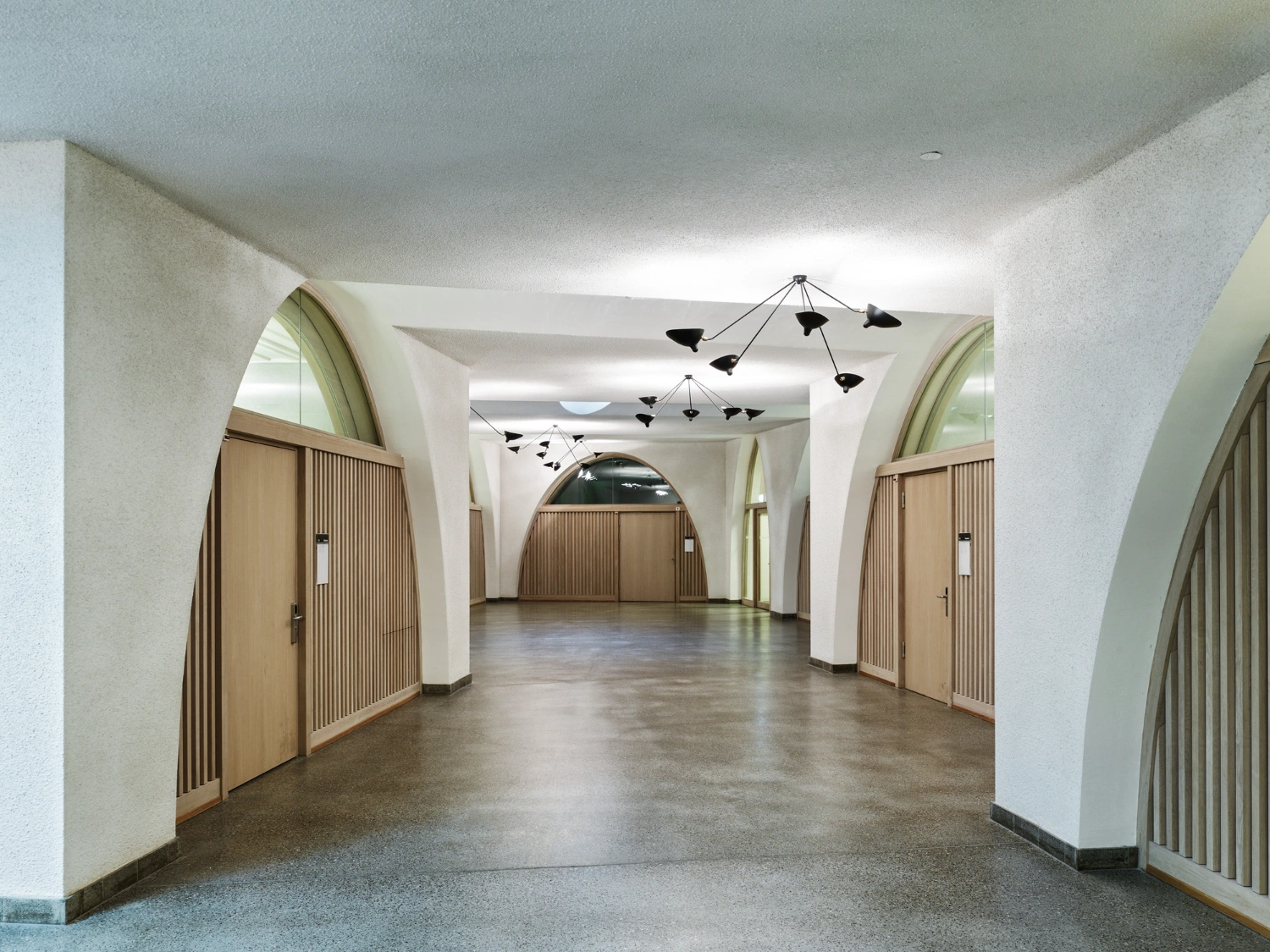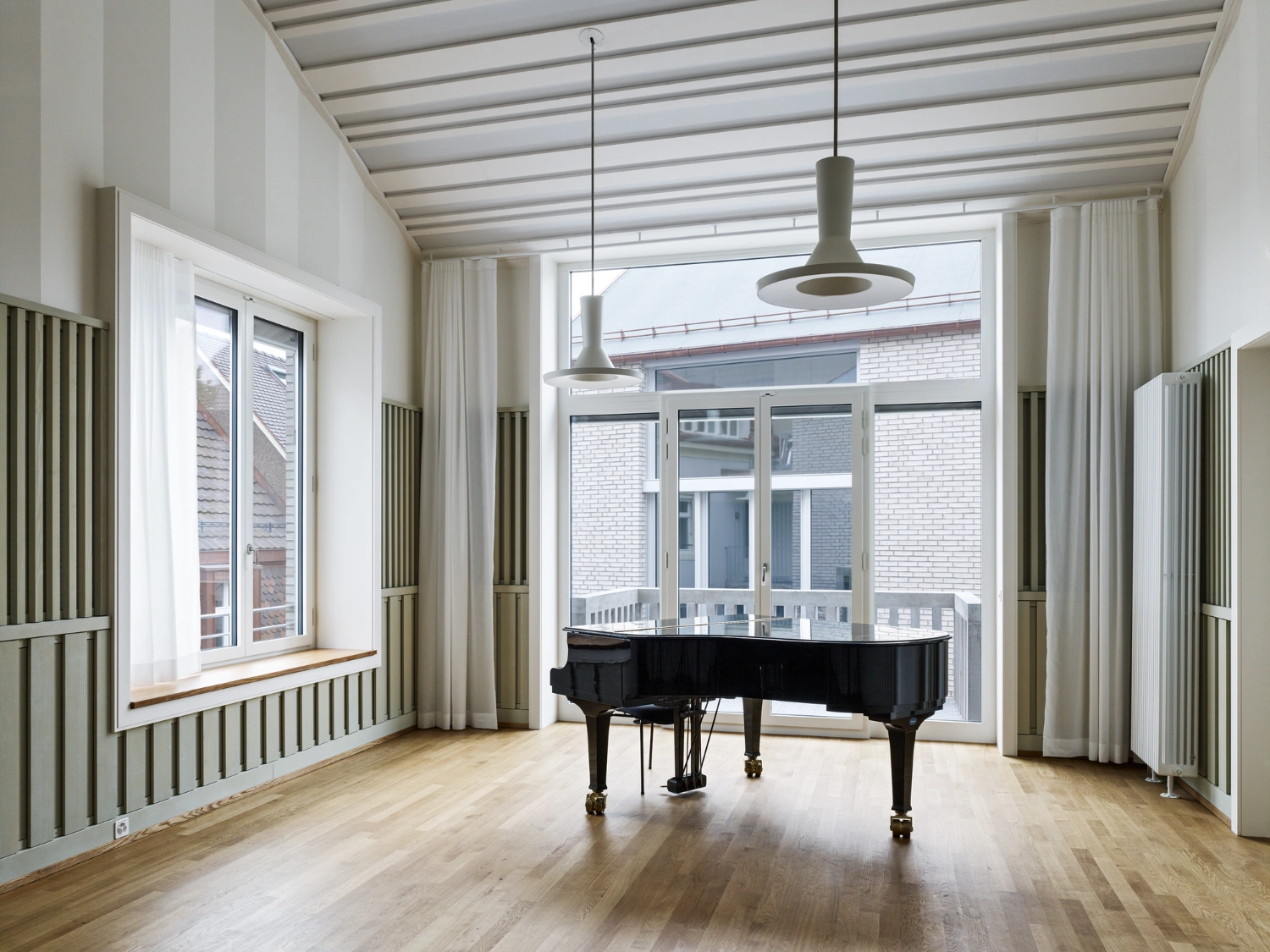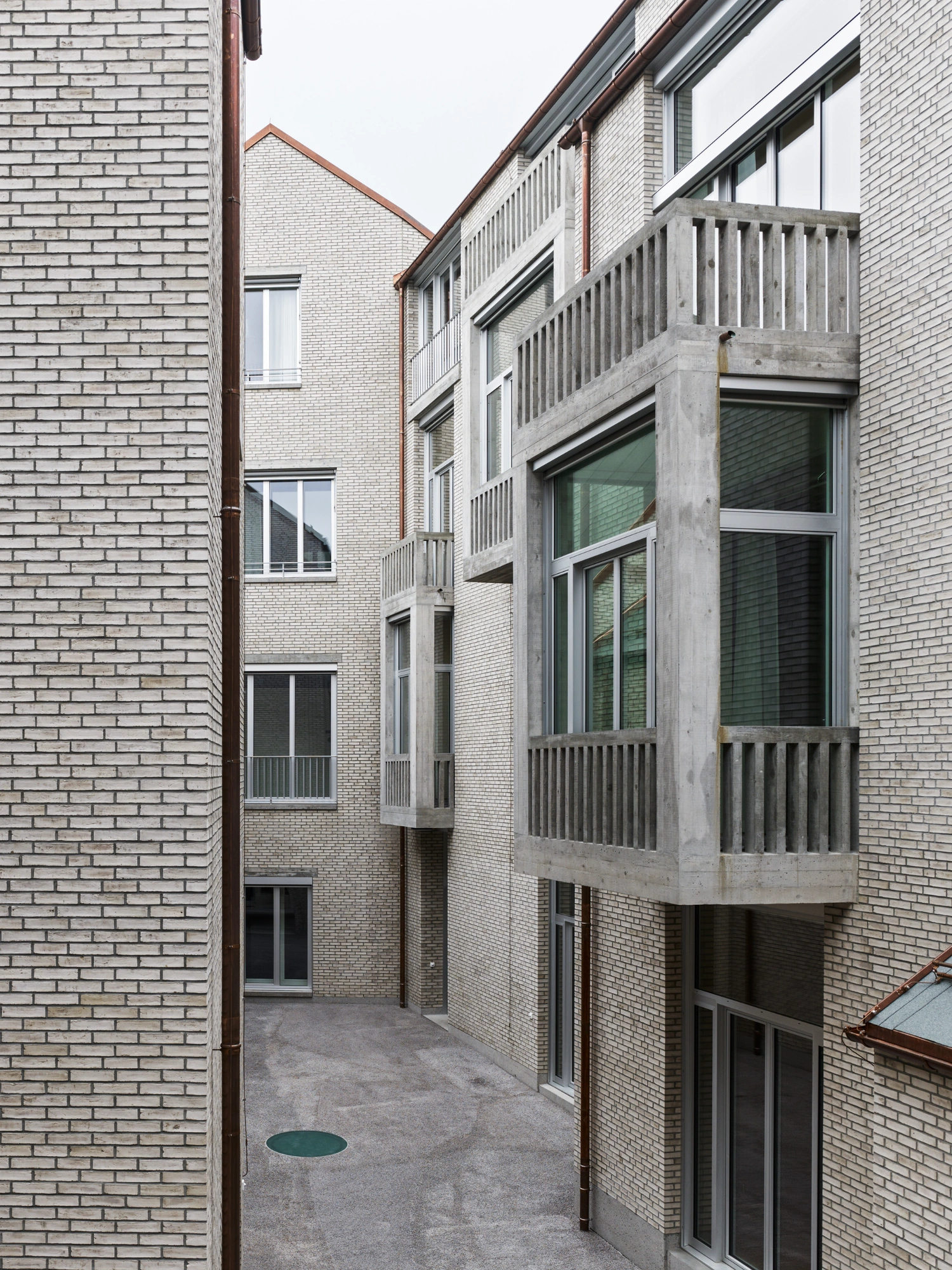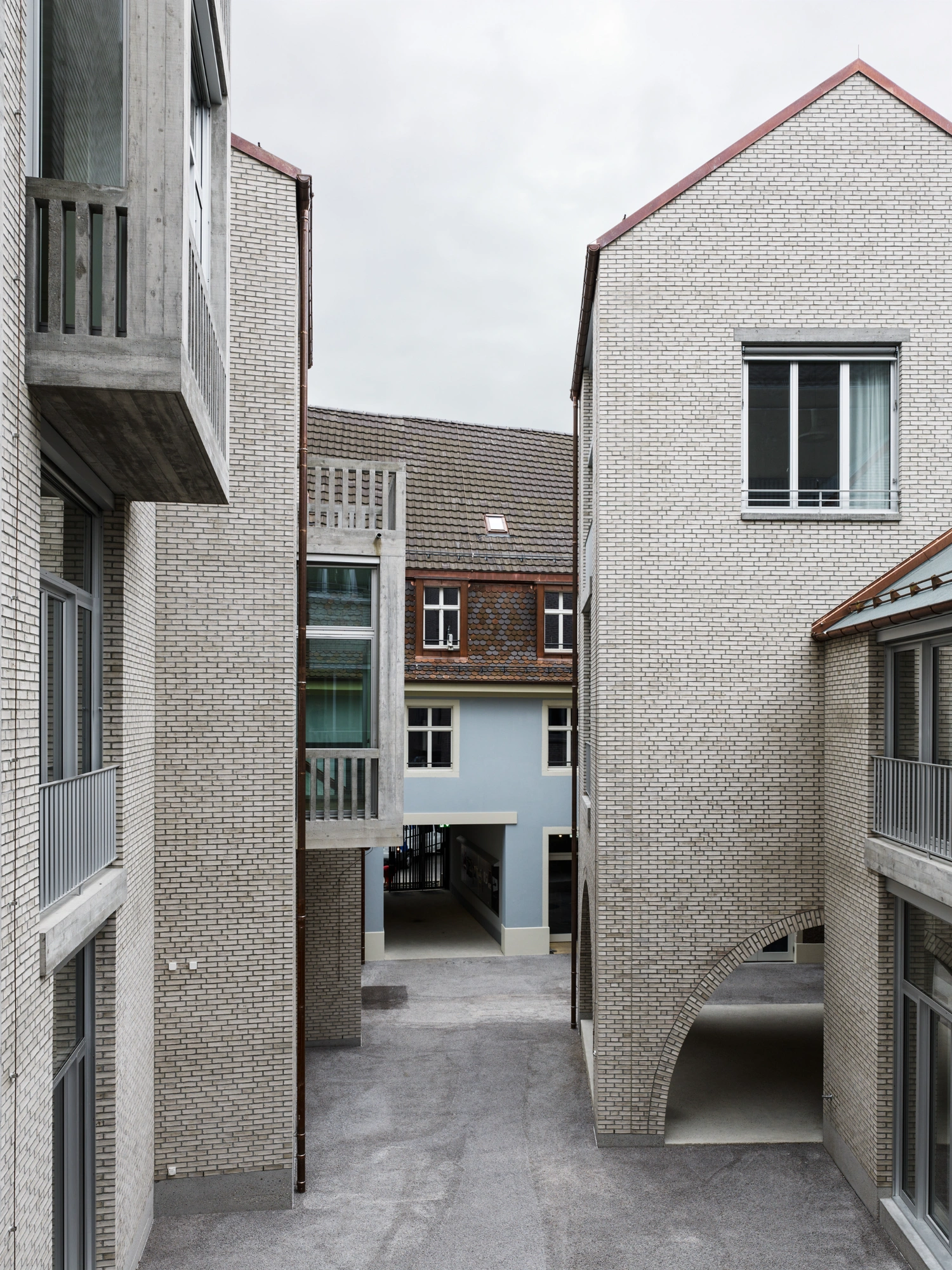In the historic heart of Basel, architects Buol & Zünd have woven a uniquely intricate tapestry of music, community, and architectural expression in their design for the Jazz Campus.
Conceived as a tribute to jazz’s spirit of improvisation and serendipity, the project gracefully balances the rigidity of architectural planning with the fluid spontaneity essential to jazz music.
Rooted in thoughtful urban archaeology, the architects chose to anchor the new building’s form directly onto the centuries-old city footprint. Thus, the modern structure emerges organically, becoming a natural extension of Basel’s layered urban fabric. At its core, a central courtyard forms both the literal and figurative heart of the campus, a deliberate gesture that encourages spontaneous encounters and vibrant social exchanges.
Inside, the campus is organized not to streamline movement, but intentionally to complicate it—paths meander, rooms interconnect unpredictably, and circulation fosters chance interactions. This thoughtful spatial choreography begins privately in a diverse collection of rehearsal rooms, spills into communal hallways, and finally culminates dramatically in the bustling courtyard, a space of interaction and musical exchange.
Acoustically, the Jazz Campus stands as a marvel of nuanced detailing. Recognizing the individuality of musical preference, Buol & Zünd rejected the idea of a single ideal rehearsal space. Instead, they provided a carefully curated assortment of rooms, each unique in dimension, acoustic properties, and ambiance, inviting musicians to find their own space of creative comfort. Signature performance spaces, such as a wood-lined sound chamber and a sophisticated jazz club opening toward the city, elevate this intimate relationship between architecture and music.
Materiality and craftsmanship further distinguish the Jazz Campus as a sophisticated work of interior architecture. To achieve necessary acoustic precision, walls of considerable thickness encapsulate spaces, effectively creating rooms within rooms. Despite each space’s individuality, the overall cohesion and refined material language unify the complex, ensuring an unmistakable architectural identity.

